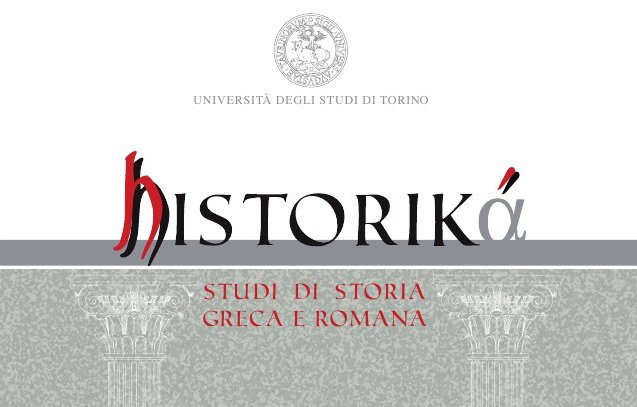Due dediche focidesi per una vittoria contro i Tessali? Analisi comparata di Syll.3 202B e Syll.3 203A
DOI:
https://doi.org/10.13135/2039-4985/2603Abstract
Il dossier sulla conflittualità tessalo-focidese comprende tradizionalmente oltre ad alcune fonti letterarie due epigrafi delfiche alquanto lacunose: Syll.3 202B e Syll.3 203A. I primi editori non hanno esitato a connetterle alle battaglie arcaiche descritte da Erodoto (VIII 27-28), Pausania (X 1, 3-11) e Plutarco (mul.virt. 2). Di recente è prevalso un atteggiamento di cautela suggerito soprattutto dalle pesanti integrazioni con le quali in passato si è intervenuto talora con disinvoltura eccessiva. D’altro canto questa cautela sconfina in certi casi in una deriva ipercritica che va di pari passo con una rigida separazione tra considerazioni epigrafiche da un lato e considerazioni storiche dall’altro, a discapito delle seconde. Questo studio si propone in primo luogo di riesaminare le due iscrizioni da un punto di vista epigrafico, comparandole con iscrizioni rinvenute a Delfi, Kalapodi, Elatea e Panopeo; in secondo luogo di riconsiderarle in un quadro complessivo cercando un equilibrio tra la suggestiva ma meccanica connessione di testimonianze epigrafiche e letterarie da un lato e l’ipercriticismo dall’altro. La combinazione di considerazioni di ordine epigrafico con un esame della storia delle Focide così come è riflessa nelle fonti letterarie di IV secolo e in quelle successive rende assai probabile l’ipotesi per cui le due epigrafi risalgano al IV secolo ma commemorino una vittoria arcaica sui Tessali.
The dossier about the wars between Thessalians and Phokians also includes two very fragmentary inscriptions found in Delphi: Syll.3 202B and Syll.3 203A. The French and German epigraphists who edited them in the first half of referred to by Herodotus (8.27-28), Pausanias (10.1.3-11) and Plutarch (mul.virt. 2). In recent times, scholars have become more cautious because of the large amount of lacunae in the inscriptions that were rather freely restored in the past. On the other hand, this caution runs the risk of hypercriticism and goes hand in hand with a strict separation of historical remarks on the one side, and epigraphical ones, on the other side. This paper first tries to look for further clues by closely comparing Syll.3 202B and Syll.3 203A with other Phokian inscriptions found in Delphi, Kalapodi, Panopeus and Elateia. The paper then aims to combine the epigraphical approach with the historical one and to strike a balance between hypercriticism and positivistic inferences. A close consideration of the history of fourth-century Phokis confirms the results of a strict epigraphical analysis and provides further evidence supporting the restorations proposed by nineteenth-century epigraphists: Syll.3 202B and Syll.3 203A most probably date back to the fourth century but commemorate the archaic Thessalian-Phokian battles.
##submission.downloads##
Pubblicato
Fascicolo
Sezione
Licenza
Gli autori che pubblicano su questa rivista accettano le seguenti condizioni:
- Gli autori mantengono i diritti sulla loro opera e cedono alla rivista il diritto di prima pubblicazione dell'opera, contemporaneamente licenziata sotto una Licenza Creative Commons - Attribuzione che permette ad altri di condividere l'opera indicando la paternità intellettuale e la prima pubblicazione su questa rivista.
- Gli autori possono aderire ad altri accordi di licenza non esclusiva per la distribuzione della versione dell'opera pubblicata (es. depositarla in un archivio istituzionale o pubblicarla in una monografia), a patto di indicare che la prima pubblicazione è avvenuta su questa rivista.


 The journal has been approved for inclusion in DOAJ. The DOAJ listing of the journal is available at
The journal has been approved for inclusion in DOAJ. The DOAJ listing of the journal is available at 

